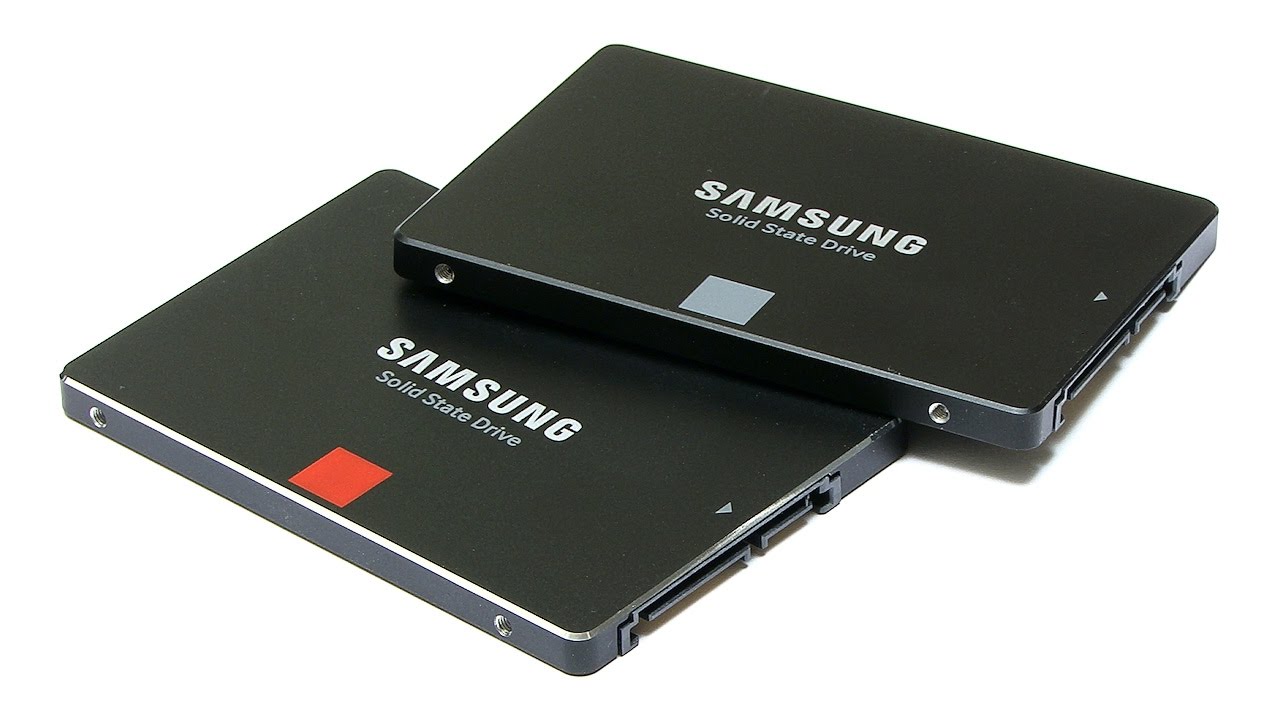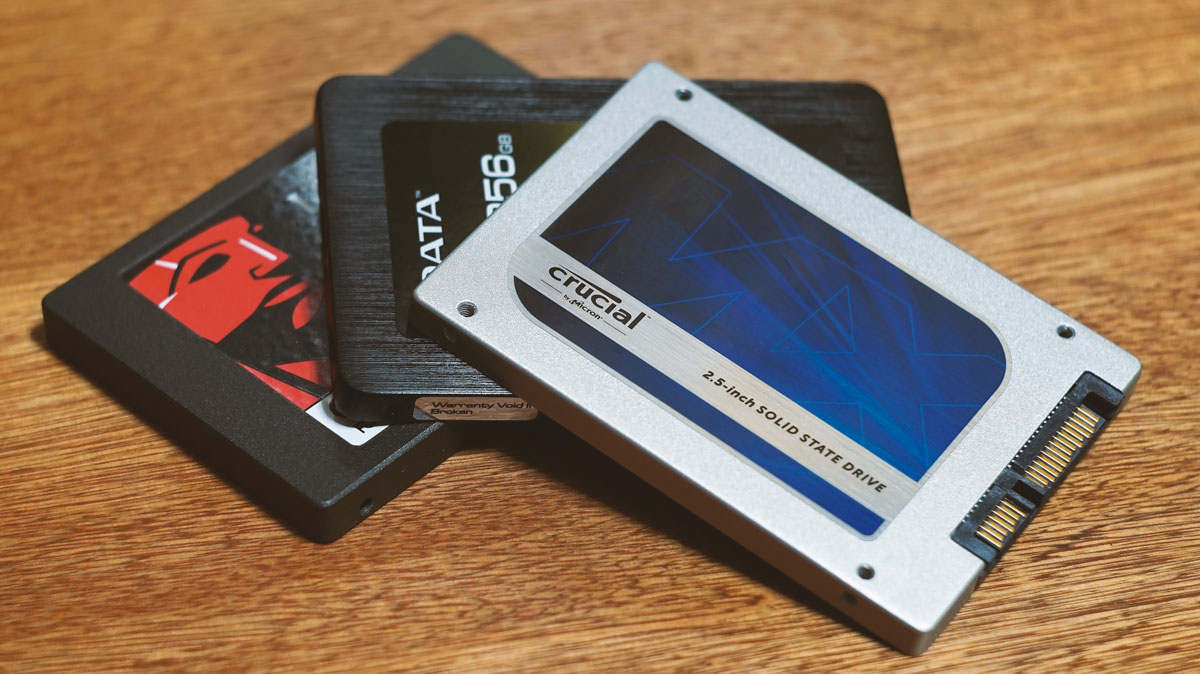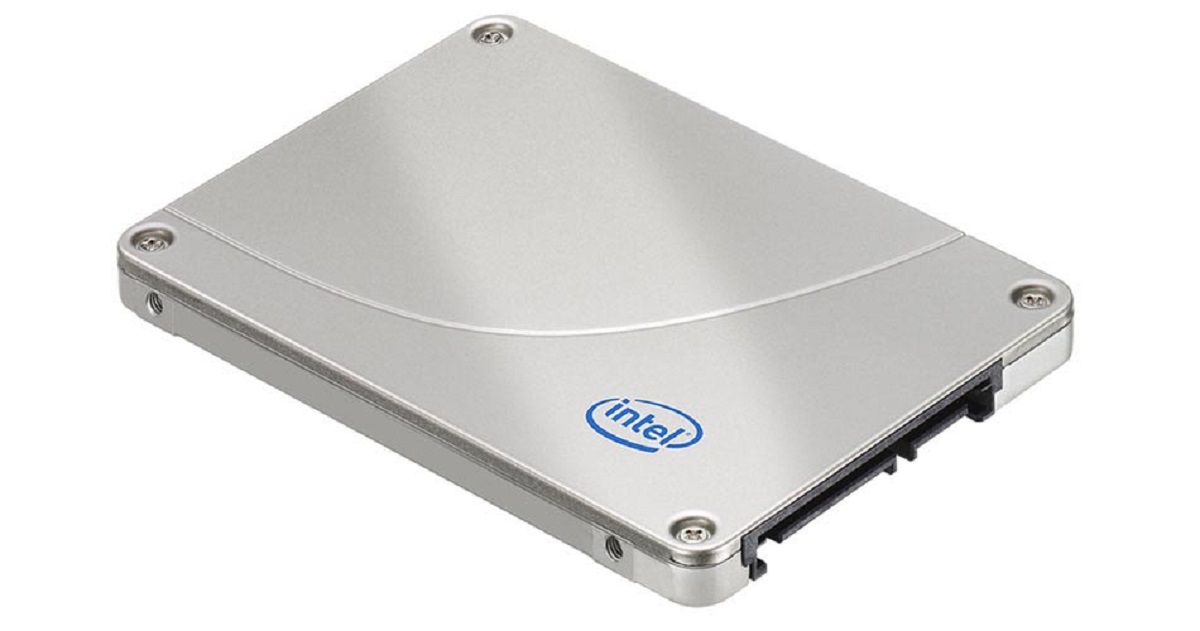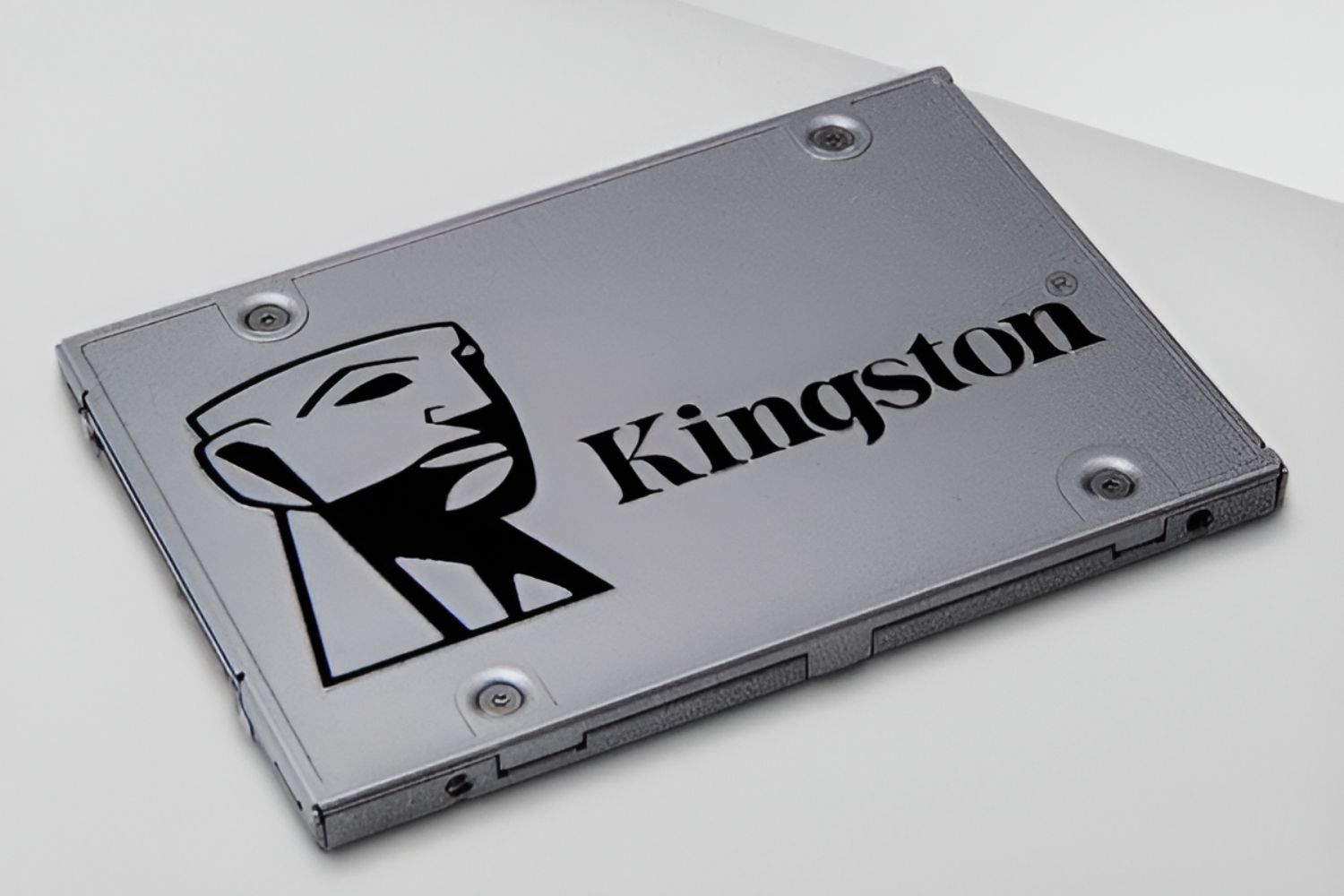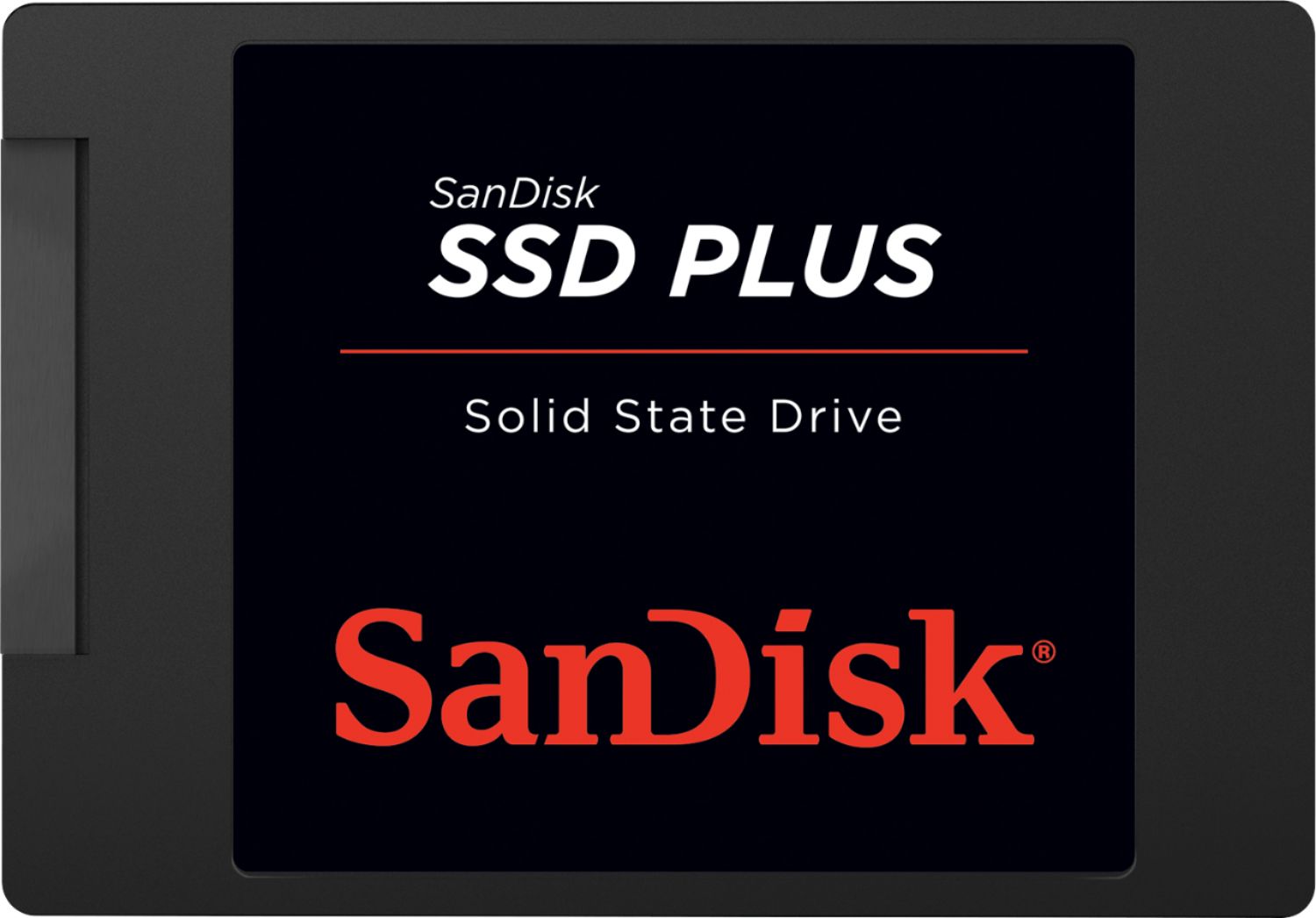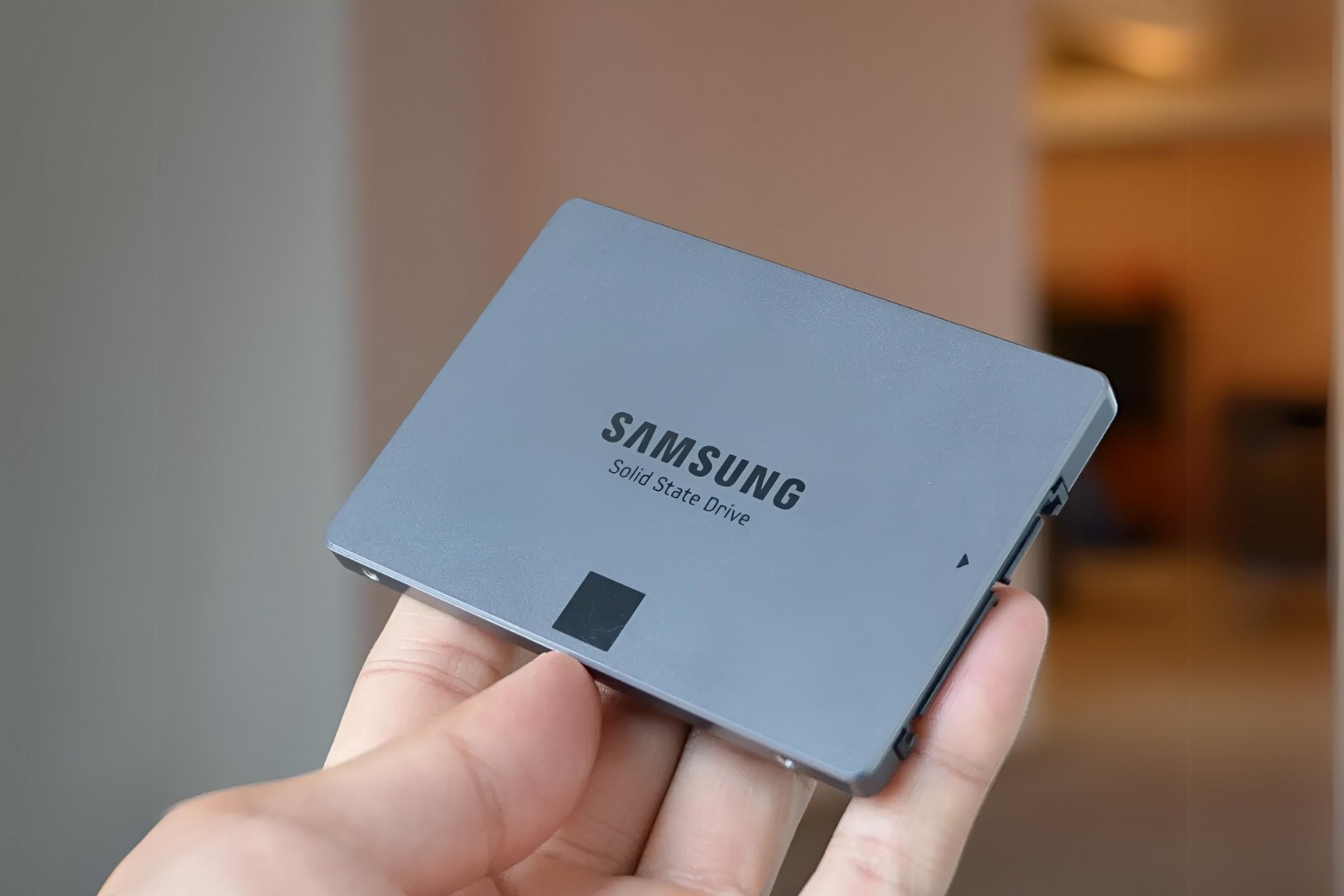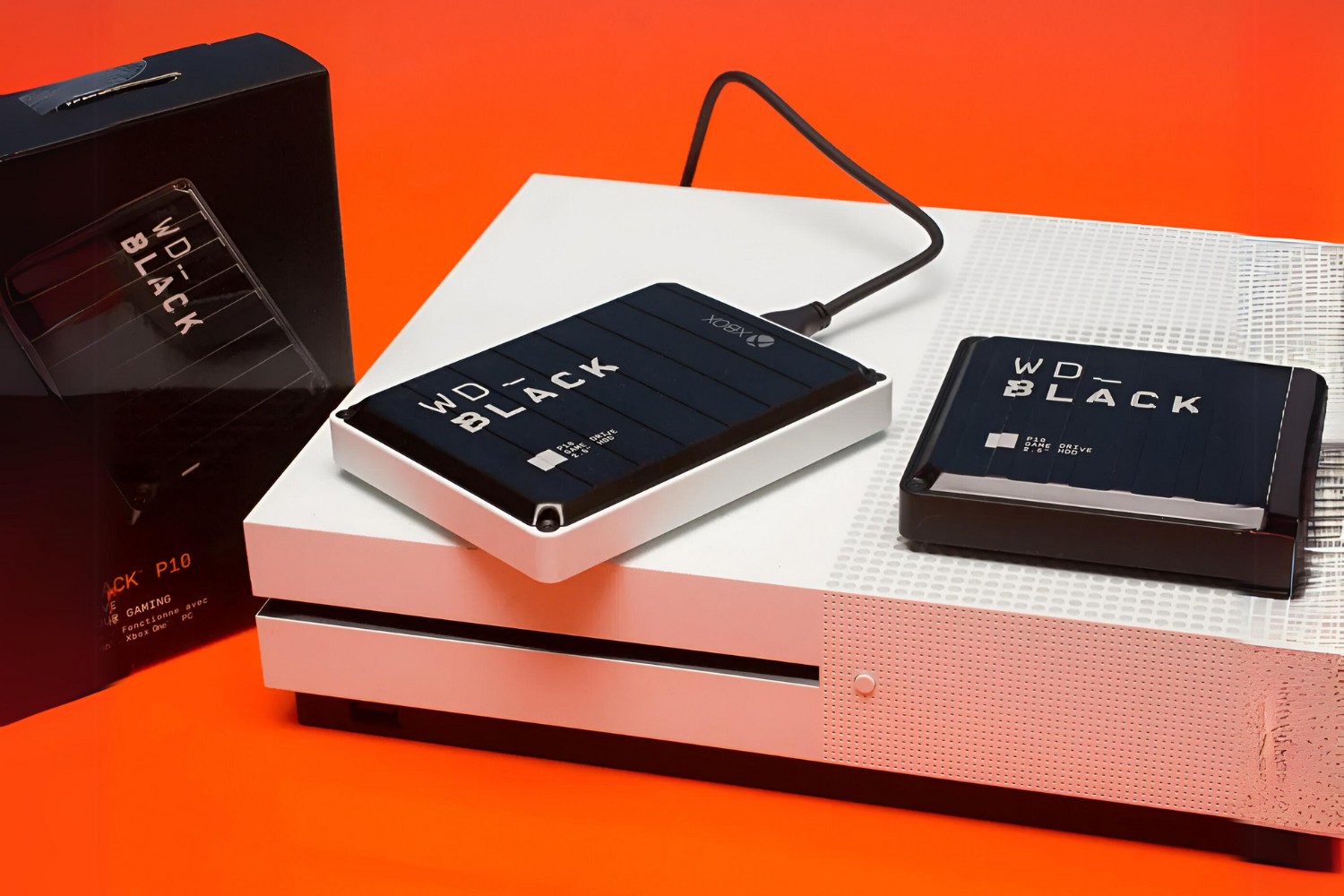Introduction
A solid state drive (SSD) is a type of storage device that is becoming increasingly popular among computer users looking to enhance their system’s performance. Unlike traditional hard disk drives (HDDs) that rely on spinning magnetic platters to store and retrieve data, SSDs use flash memory technology, which provides faster data access times and improved overall system responsiveness.
With the advancement of technology and decreasing prices, SSDs are now more affordable and accessible to the average computer user. Whether you’re a gamer looking for faster load times, a creative professional working with large files, or simply someone who wants a smoother computing experience, upgrading to an SSD can make a significant difference.
In this article, we will explore the benefits of using a solid state drive, guide you on how to choose the right SSD for your computer, and provide step-by-step instructions on how to install and optimize your new SSD. We will also address some common mistakes to avoid when using an SSD and answer frequently asked questions to help you make an informed decision.
So, if you’re ready to supercharge your computer’s performance and enjoy lightning-fast data access, let’s dive into the world of solid state drives and discover how they can transform your computing experience.
What is a Solid State Drive (SSD)?
A solid state drive (SSD) is a storage device that uses non-volatile memory to store and retrieve data. Unlike traditional hard disk drives (HDDs) that rely on spinning magnetic platters and mechanical moving parts, SSDs utilize flash memory technology, which enables faster data access times and increased reliability.
The key component of an SSD is the NAND flash memory, which consists of multiple memory cells that can hold data even when power is removed. These memory cells are organized into pages and blocks, and data is written and read electronically, resulting in much faster performance compared to HDDs.
There are two main types of SSDs based on the type of NAND flash memory they use: SLC (Single-Level Cell) and MLC (Multi-Level Cell). SLC SSDs store one bit of data per memory cell, providing the fastest performance and highest durability. MLC SSDs, on the other hand, can store multiple bits per cell, making them more affordable but slightly slower and less durable compared to SLC SSDs.
SSDs come in various form factors, including the standard 2.5-inch drive size that is compatible with most desktop and laptop computers. There are also smaller M.2 SSDs that are commonly used in ultrabooks and compact desktop systems.
Overall, solid state drives offer several advantages over traditional hard drives. They deliver significantly faster boot times and application loading speeds, making your computer feel more responsive. Additionally, SSDs are more resistant to physical shock and have lower power consumption, resulting in longer battery life for laptops.
While SSDs generally have a shorter lifespan in terms of write cycles compared to HDDs, modern SDDs use advanced wear-leveling algorithms and error correction techniques to mitigate this issue and ensure a sufficient lifespan for typical usage scenarios.
Now that we have a basic understanding of what an SSD is and how it works, let’s explore the benefits of using a solid state drive in the next section.
Benefits of Using a Solid State Drive
Using a solid state drive (SSD) in your computer can bring a multitude of advantages that significantly enhance your computing experience. Let’s explore some of the key benefits below:
- Speed: One of the most notable advantages of an SSD is its incredible speed. Due to the absence of moving parts, data can be accessed nearly instantly, resulting in faster boot times, quicker application launches, and improved overall system responsiveness. Tasks that used to take minutes on a traditional hard drive can now be completed in a matter of seconds with an SSD.
- Reliability: SSDs are much more reliable than traditional hard drives. Since they don’t have physical moving parts, there’s no risk of mechanical failure or data loss due to accidental bumps or drops. This makes SSDs an ideal choice for laptops or portable devices that may be subjected to rough handling.
- Energy Efficiency: Solid state drives consume less power than traditional hard drives, resulting in improved energy efficiency. This not only saves electricity and extends the battery life of laptops and portable devices, but it also generates less heat, which can help to maintain a cooler operating temperature for your computer.
- No Noise: Unlike traditional hard drives that produce noise from spinning disks and moving parts, SSDs are completely silent. This eliminates the distracting noise that can be produced by a spinning hard drive and provides a quieter and more peaceful computing environment.
- Compact Size: SSDs are typically smaller and lighter than traditional hard drives, making them the perfect storage solution for compact laptops, ultrabooks, and small form factor desktop computers. Their smaller size also allows for more flexible installation options and makes them easier to transport.
- Improved Durability: Since SSDs do not have any moving parts, they are more durable and resistant to shock and vibrations. This makes them an excellent choice for users who frequently travel with their laptops or for those who work in environments where physical impacts could occur.
Overall, the benefits of using a solid state drive are clear. Faster performance, increased reliability, energy efficiency, silent operation, compact size, and improved durability make SSDs an excellent investment for anyone looking to boost their computer’s speed and efficiency.
Now that we understand the benefits of using an SSD, let’s move on to the next section, where we will guide you on how to choose the right solid state drive for your computer.
How to Choose the Right Solid State Drive for Your Computer
When it comes to selecting the right solid state drive (SSD) for your computer, there are several factors to consider. By understanding these factors, you can make an informed decision and find an SSD that meets your specific needs. Here are some key points to keep in mind:
- Storage Capacity: Determine how much storage space you require for your files, applications, and operating system. SSDs come in various capacities, ranging from 128GB to several terabytes. Consider your usage patterns and opt for a capacity that provides ample storage for your needs.
- Form Factor: Check the form factor compatibility with your computer. The most common form factor for SSDs is the 2.5-inch drive size, which is compatible with most desktops and laptops. However, if you have an ultrabook or a compact desktop, you may need an SSD with an M.2 form factor.
- Interface: SSDs use different interfaces to connect to the computer, such as SATA, PCIe, or NVMe. SATA SSDs are more common and compatible with most devices, while PCIe and NVMe SSDs offer faster speeds, especially for tasks such as gaming or content creation. Ensure that your computer has the necessary interface to support the SSD you plan to purchase.
- Performance: Consider the speed and performance of the SSD. Look for high read and write speeds, as well as low latency. Faster SSDs can deliver snappier performance, especially during boot times and application launches. However, keep in mind that high-performance SSDs often come with a higher price tag.
- Endurance: Check the endurance rating of the SSD, which indicates the total amount of data that can be written to the drive over its lifetime. Higher endurance ratings are important if you perform frequent and intensive write operations. However, for most general users, the endurance of modern SSDs should be sufficient for everyday use.
- Price: Set a budget for your SSD purchase. SSD prices have become more affordable in recent years, but higher-capacity or high-performance SSDs can still be more expensive. Consider your storage needs and performance requirements, and find a balance between price and performance.
By considering these factors, you can narrow down your options and find the right SSD that matches your requirements and budget. Take your time to research and read reviews to ensure you make an informed decision.
After selecting the perfect SSD for your computer, the next step is to install it. In the next section, we will guide you through the process of installing a solid state drive in your computer.
Steps to Install a Solid State Drive in Your Computer
Installing a solid state drive (SSD) in your computer can greatly improve its speed and performance. Follow these steps to successfully install an SSD:
- Prepare: Before starting, ensure you have the necessary tools, including a screwdriver and any adapter brackets or cables that may be required for your specific computer model. Make sure to power off and unplug your computer.
- Locate Existing Hard Drive: Identify the location of your existing hard drive. It is usually housed in a drive bay, secured with screws or brackets. Carefully remove the connections and screws to detach the hard drive.
- Install the SSD: Insert the SSD into an available drive bay. Secure it using screws or brackets, ensuring a secure and stable fit. If the SSD is in the 2.5-inch form factor, you may need to use an adapter bracket to fit it properly.
- Connect the Cables: Connect the necessary cables to the SSD. This includes a data cable (typically a SATA cable) and a power cable. Refer to your computer’s manual or motherboard documentation for specific instructions on connecting the cables.
- Secure the SSD: Once the cables are connected, make sure the SSD is firmly secured in place. Double-check all connections to ensure they are properly seated and secure.
- Replace the Case: Close the computer case and secure it with screws. Ensure all connections are secure and nothing is obstructing the SSD or its cables.
- Boot Up: Power on your computer and access the BIOS/UEFI settings by pressing the relevant key during startup (usually Del, F2, or Esc). Confirm that the SSD is detected in the BIOS/UEFI and set it as the primary boot device.
- Install the Operating System: If the SSD is new and you haven’t transferred your operating system, you will need to install it. Insert the OS installation media (e.g., a USB drive or DVD) and follow the on-screen instructions to install the operating system on the SSD.
- Transfer Data: If you’ve installed a new SSD and have existing data on your old hard drive, you can transfer it using data migration software or by manually copying the files. Follow the instructions provided with your chosen method to transfer data to the SSD.
- Test and Verify: Once your operating system and data are transferred, test the system to ensure everything is working properly. Verify that the SSD is being detected correctly and that your computer’s performance has improved.
By following these steps, you can successfully install a solid state drive in your computer and take advantage of its improved speed and performance. Now that you have your SSD installed, the next section will guide you through the process of transferring data to your new solid state drive.
Transferring Data to Your New Solid State Drive
After successfully installing your new solid state drive (SSD), you may want to transfer your data from your old storage device to the SSD. This can be done using various methods, depending on your specific needs and preferences. Here are some options to consider:
- Data Migration Software: Many SSD manufacturers provide data migration software that allows you to transfer your operating system, applications, and files from your old storage device to the SSD. Follow the instructions provided with the software to initiate the migration process. This method is often the easiest and most convenient way to transfer your data.
- Manual File Transfer: If you prefer a more hands-on approach, you can manually transfer your data from your old storage device to the SSD. Connect both the old storage device (e.g., HDD) and the SSD to your computer. Copy and paste or drag and drop the desired files and folders from the old storage device to the SSD. This method allows you to have more control over which specific files you want to transfer.
- External Enclosure: If you have a laptop or a desktop computer with only one drive slot, you can use an external enclosure to connect your old storage device to your computer. Insert the old storage device into the enclosure and connect it to your computer via USB or another compatible interface. Then, copy the desired files and folders from the old storage device to the SSD.
- Cloud Storage: If you have files stored in cloud storage services such as Google Drive, Dropbox, or OneDrive, you can download them directly to your new SSD. This is a convenient option for files that are not stored locally on your computer.
Regardless of the method you choose, make sure to double-check that all your important files and data have been successfully transferred to the SSD before removing or erasing any data from your old storage device.
Once you have transferred your data to the SSD, you can set it as the primary boot device in your computer’s BIOS/UEFI settings. This ensures that your computer boots from the SSD and takes full advantage of its faster speed and performance.
With your data successfully transferred to the SSD, you can now enjoy the improved speed and responsiveness of your computer’s performance. In the next section, we will explore how to optimize your solid-state drive for maximum performance.
Optimizing Your Solid State Drive for Maximum Performance
While solid state drives (SSDs) already offer incredible speed and performance compared to traditional hard disk drives (HDDs), there are a few optimizations you can make to further enhance the performance of your SSD. Let’s explore some key tips to optimize your SSD:
- Enable TRIM: TRIM is a feature that allows the operating system to notify the SSD which data blocks are no longer in use. Enabling TRIM helps maintain the performance and lifespan of the SSD by improving its ability to quickly erase and write data. On most modern operating systems, TRIM is enabled by default, but it’s always a good idea to double-check and make sure.
- Update Firmware: SSD manufacturers regularly release firmware updates that can enhance the performance, reliability, and compatibility of your SSD. Check the manufacturer’s website for any available firmware updates and follow the instructions provided to update your SSD’s firmware.
- Avoid Full Capacity Usage: Keeping a small amount of free space on your SSD is essential for optimal performance. Avoid filling the SSD to its maximum capacity, as it can slow down performance. Aim for maintaining at least 10-20% of free space to allow for efficient wear-leveling and garbage collection algorithms to function properly.
- Disable Indexing: Disable the indexing feature on your SSD. Since SSDs have fast access times and retrieve files quickly, the benefits of indexing are minimal and can consume valuable SSD resources. To disable indexing, go to the drive properties in your operating system and uncheck the “Allow files on this drive to have contents indexed” option.
- Disable Superfetch and Prefetch: Superfetch and prefetch are features in Windows that help improve the performance of traditional hard drives. However, they are not necessary for SSDs and can use unnecessary system resources. Disable these features by opening the Services application (services.msc) and disabling the Superfetch and prefetch services.
- Enable AHCI Mode: AHCI (Advanced Host Controller Interface) mode allows your SSD to operate at its full potential. Make sure your computer’s BIOS/UEFI settings are configured to use AHCI mode for the SSD. Refer to your motherboard’s manual or manufacturer’s website for instructions on how to enable AHCI mode.
- Avoid Defragmentation: Unlike traditional hard drives, SSDs do not benefit from defragmentation. In fact, defragmenting an SSD can cause unnecessary wear and tear on the drive. Most modern operating systems automatically recognize SSDs and disable defragmentation by default, but it’s worth double-checking to ensure it is disabled.
- Regularly Update Your OS and SSD Drivers: Ensure that your operating system and SSD drivers are up to date. Regular updates often include important performance improvements, bug fixes, and compatibility enhancements that can optimize your SSD’s performance.
By following these optimization tips, you can make the most out of your SSD’s performance and ensure a smooth computing experience. Remember to regularly backup your data to prevent data loss, and enjoy the speed and responsiveness that your optimized SSD brings to your computer.
In the next section, we will discuss some common mistakes to avoid when using a solid-state drive.
Common Mistakes to Avoid When Using a Solid State Drive
While solid state drives (SSDs) offer numerous benefits and improved performance, there are some common mistakes that users should avoid to ensure optimal functionality and longevity of their SSD. Let’s explore these mistakes and how to avoid them:
- Excessive Writes: SSDs have a limited number of write cycles. Avoid unnecessary or excessive writes to your SSD, such as continuously downloading and deleting large files or running resource-intensive applications that constantly write data.
- Failure to Enable TRIM: TRIM is a crucial feature that helps maintain SSD performance. Ensure TRIM is enabled in your operating system to allow the SSD to efficiently manage its blocks. Check the operating system’s settings or use a utility program to confirm TRIM is enabled.
- Using Disk Defragmentation: SSDs do not require defragmentation like traditional hard drives. Running a defragmentation tool on an SSD can cause unnecessary wear and tear, reducing its lifespan. Avoid using disk defragmentation software on your SSD.
- Disabling System Hibernation: Disabling system hibernation can prevent your computer from creating a hibernation file, which can save valuable SSD space. However, modern operating systems are capable of managing hibernation efficiently on SSDs without causing any significant impact on performance. It is generally unnecessary to disable system hibernation.
- Filling up the SSD to Its Maximum Capacity: Keeping a significant amount of free space on your SSD is crucial for maintaining performance. Avoid filling the SSD to its maximum capacity, as it can lead to slower performance and decreased longevity. Aim to have at least 10-20% of free space on the SSD.
- Ignoring Firmware Updates: SSD manufacturers regularly release firmware updates to improve performance, reliability, and compatibility. Ignoring these updates may result in missed performance enhancements or compatibility issues with your system. Check the manufacturer’s website periodically and apply any available firmware updates for your SSD.
- Using Older SATA Ports or Cables: Older SATA ports or cables may not fully support the fastest speeds offered by modern SSDs. To ensure optimal performance, connect your SSD to the SATA III (6 Gbps) ports on your motherboard using high-quality SATA cables with the correct specification.
- Skipping Regular Backups: Solid state drives, like any other storage devices, can experience failures or data corruption. It is crucial to regularly back up your important files and data to avoid potential loss. Utilize cloud storage, external hard drives, or other backup solutions to ensure your data is protected.
By avoiding these common mistakes, you can maximize the performance and lifespan of your solid state drive. It’s important to be mindful of how you use and maintain your SSD to ensure it remains reliable and provides optimal performance over time.
Now that we have covered the common mistakes to avoid, let’s move on to the next section, where we will answer some frequently asked questions about solid state drives.
Frequently Asked Questions about Solid State Drives
Here are answers to some commonly asked questions about solid state drives (SSDs):
- Are SSDs compatible with my computer?
Most modern computers are compatible with SSDs. SSDs come in different form factors, such as the standard 2.5-inch size or the smaller M.2 form factor. You may need an adapter or specific slot on your motherboard to install the SSD. Check your computer’s specifications or consult the manufacturer’s documentation for compatibility information. - Can I upgrade my old computer with an SSD?
Yes, upgrading your old computer with an SSD can significantly improve its performance. As long as your computer has a compatible slot or adapter for the SSD, you can replace the existing storage device with the SSD. However, it’s important to check if your computer’s hardware and firmware support the SSD interface (SATA, PCIe, NVMe) you plan to use. - Do I need to reinstall my operating system on the SSD?
If you are installing a new SSD and want to enjoy the benefits of faster boot times and improved performance, it is recommended to reinstall your operating system on the SSD. This ensures that the operating system is properly optimized for the SSD. However, you can clone or migrate your existing operating system to the SSD if you prefer not to reinstall. - How long do SSDs last?
The lifespan of an SSD depends on various factors, including the quality of the SSD, the amount of data written to it, and the usage patterns. Modern SSDs have improved durability and endurance. On average, a typical consumer-grade SSD can last for several years, even with regular usage. Most SSD manufacturers provide a warranty or endurance rating to give you an idea of the expected lifespan. - Should I defragment my SSD?
No, you should not defragment your SSD. Unlike traditional hard drives, SSDs do not benefit from defragmentation, as it can cause unnecessary wear and tear on the drive. Modern operating systems recognize SSDs and disable defragmentation by default. It’s best to leave defragmentation disabled for your SSD. - Can I use an SSD and HDD together?
Absolutely! Many people choose to have both an SSD and an HDD in their computer. The SSD can be used for the operating system and frequently accessed applications, while the HDD can be used for storing large files, such as photos, videos, and documents. This setup provides the benefits of both speed and storage capacity. - Can I move my SSD to another computer?
Yes, you can move your SSD to another computer as long as it is compatible with the new computer’s hardware and firmware. However, keep in mind that you may need to reinstall the operating system or perform a fresh installation to ensure optimal performance on the new system.
These are just a few frequently asked questions about solid state drives. If you have further inquiries or need more specific information, consult your SSD manufacturer’s documentation or seek assistance from a knowledgeable computer professional.
Now that we have addressed some common questions, let’s conclude this article on using solid state drives and how they can enhance your computing experience.
Conclusion
Solid state drives (SSDs) have revolutionized the way we store and access data on our computers. With their incredible speed, reliability, energy efficiency, and compact size, SSDs offer numerous advantages over traditional hard disk drives. By upgrading to an SSD, you can experience faster boot times, quicker application launches, and a more responsive computing experience overall.
In this article, we discussed what SSDs are and how they work, as well as the benefits they provide. We also explored the important factors to consider when choosing an SSD for your computer, including storage capacity, form factor, interface, performance, endurance, and price. Additionally, we provided step-by-step instructions for installing an SSD, transferring data, optimizing its performance, and highlighted common mistakes to avoid.
Remember to enable TRIM, update firmware, avoid excessive writes, and maintain a sufficient amount of free space on your SSD for optimal performance. Regularly updating your operating system and SSD drivers will further ensure the best performance and compatibility. And don’t forget to back up your important data regularly to prevent any potential loss.
Whether you’re a professional seeking faster rendering times, a gamer looking to minimize loading screens, or a general computer user wanting a snappier and more reliable system, upgrading to an SSD is a worthwhile investment.
So, equip your computer with the remarkable speed and efficiency of a solid-state drive – you’ll wonder how you ever lived without it. Upgrade, optimize, and enjoy the enhanced performance that an SSD brings to your computing journey.







